Madrid was chosen as the capital of Spain in 1961, due to its influence on the rest of the country, its central location and the warm weather its citizens enjoy throughout the year. Today, Madrid is still one of the most popular cities in Europe, as it reflects Spain’s diverse culture in its food, music and architecture.
As trips to Madrid increase for the summer period, we’ve compiled a list of places we recommend visiting in the city – all close to a Roomspace serviced apartment, so you can explore Madrid even if you’re only around for the weekend!
1. Puerta del Sol – Tour Guide and Kilometre 0 plaque
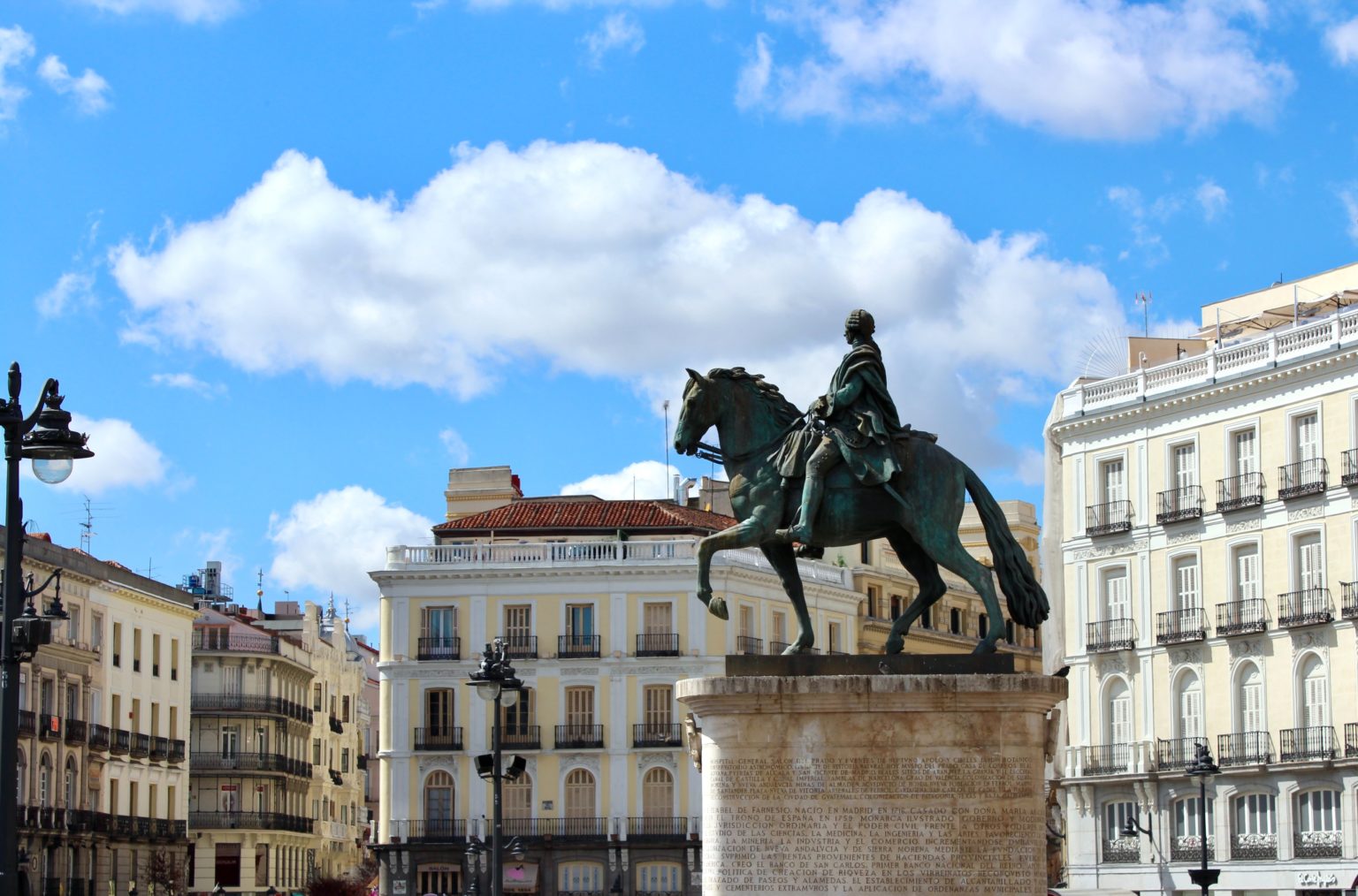
CR: TOMAS EVARISTO (@TOMASEVARISTO) | UNSPLASH
Right in the heart of Madrid, Puerta del Sol is one of the most popular tourist sites in the city due to its historical and geographical influence on the rest of Madrid.
Puerta del Sol’s stone plaque, known as Kilometre 0, marks the geographical centre of Spain and the starting point for all six major radial roads, from which distance is measured throughout the country. This is also where Madrid’s citizens gather on New Year’s Eve to take part in the countdown to the New Year, acting as a symbol of unity and progression.
If you’d like to explore Madrid in a short time, the Tours Tilla team offers FREE guided tours with volunteer locals, so you can learn more about the city’s history, architecture and cuisine in a couple of hours. The volunteers gather every day at Puerta del Sol, in front of the statue of Carlos III – look for the red umbrella.
The Puerta del Sol is close to Roomspace’s Castellana (9 minutes by bus), Sandoval (13 minutes by metro), Calle Goya (15 minutes by metro) and Fernán González (20 minutes by bus) serviced apartments.
2. Plaza de Colón – Centro Cultural de la Villa
Surrounded by the Serrano, Goya and San Juan streets, Plaza de Colón has been a key place in Madrid’s history for centuries. Although it was initially called Plaza de Santiago (St James’s Square), it was renamed Plaza de Colón after Christopher Columbus (Cristóbal Colón), in 1893.
The Plaza features the Teatro Fernán Gómez (previously called the Centro Cultural de la Villa), which is the cultural and art centre of Madrid. Here, you can find everything from the Museo de Cera (wax museum) to frequent Spanish drama, opera and dance performances.
Alongside the cultural and art centre, you can find the Torres de Colón (iconic twin towers designed in 1968 by architect Antonio Lamela), Platea (the gastronomic hub of the city, complemented by theatre performances), the Biblioteca Nacional (National Library) and the Jardines de Descubrimiento (Gardens of Discovery), amongst other landmarks.
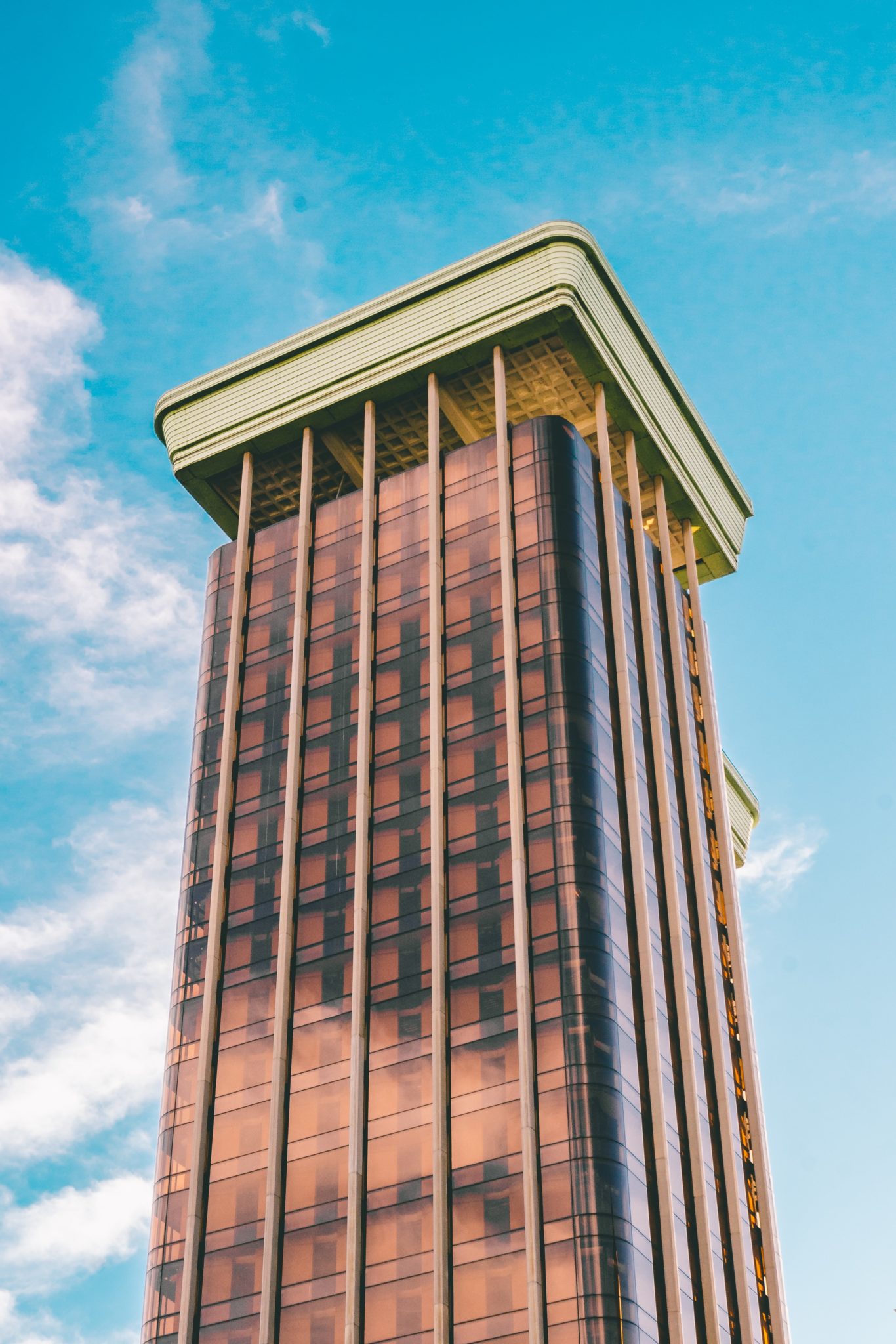
CR: MOIZ K MALIK (@MOIZK) | UNSPLASH
The Plaza de Colón is close to Roomspace’s Sandoval (10 minutes by bus), Castellana (11 minutes by bus) and Calle Goya (16 minutes by bus) serviced apartments.
3. Puerta de Alcalá – Plaza de la Independencia
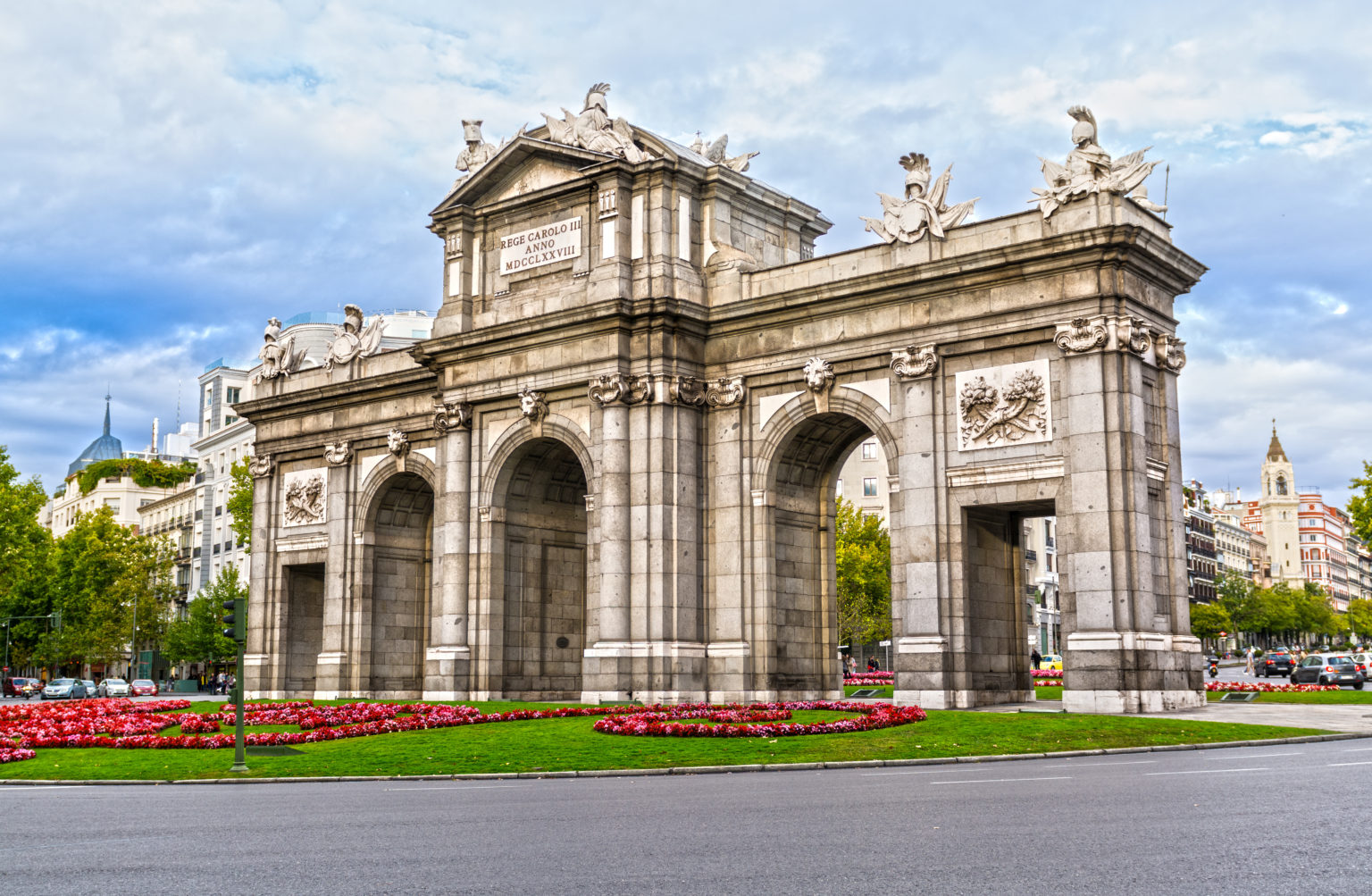
CR: SERGIO MARTINEZ | ADOBE STOCK
The Plaza de la Independencia (Independence Square) is host to the Puerta de Alcalá (the Gate of Alcalá), designed in 1868 under King Charles III after the Wall of Phillip IV – one of five walls which had surrounded the city centre since 1614 – was demolished.
The Puerta de Alcalá was built to replace the older and weakened original wall. In 1968, a new proposal was put forward to build a square around the gate and the latter was officially inaugurated ten years later, in 1778. The Puerta de Alcalá was the first triumphal arch built after the fall of the Roman Empire and each side of the gate has a unique design. Along the top, there are statues of four children holding an object that represents each of the four cardinal virtues – prudence (mirror), justice (scales), strength (spear and shield) and temperance (stirrup).
The gate has been a key factor in the history of Madrid, from the shrapnel that hit it during the 1930s Spanish Civil War (the remnants of which you can still see today) to the multicoloured lights that have reflected against it annually since the 1977 Madrid LGBTQ+ Pride Parade. The site is a symbol of Madrid’s resilience, acting as the place where the past and present coexist.
The Plaza de Alcalá is close to Roomspace’s Fernán González (12 minutes by bus), Calle Goya (13 minutes’ walk), Calle Ibiza (13 minutes by bus), Castellana (15 minutes by bus) and Sandoval (20 minutes by bus) serviced apartments.
4. Parque El Retiro
One of the largest and most popular parks in Madrid, Parque El Retiro was recognised as a UNESCO World Heritage Site in 2021. The park features everything from monuments of key figures from Spanish history (including explorer Christopher Columbus, King Alfonso XII and painter Diego Velázquez) to the Palacio de Cristal (Glass Palace) – previously a conservatory and now frequently used for art exhibitions by the Reina Sofía Museum.
El Retiro is perfect for children and adults alike, with historical landmarks, fitness classes, book fairs and art performances from all fields often seen around the park. Families can also rent out bicycles to ride around the park or boats to row along the lake. If you want to explore Madrid and learn more about everyday life in the city, El Retiro is the place for you. During the weekends, El Retiro even has staged puppet shows from the Teatro de Titeres team, aimed at children, families and everyone in between!
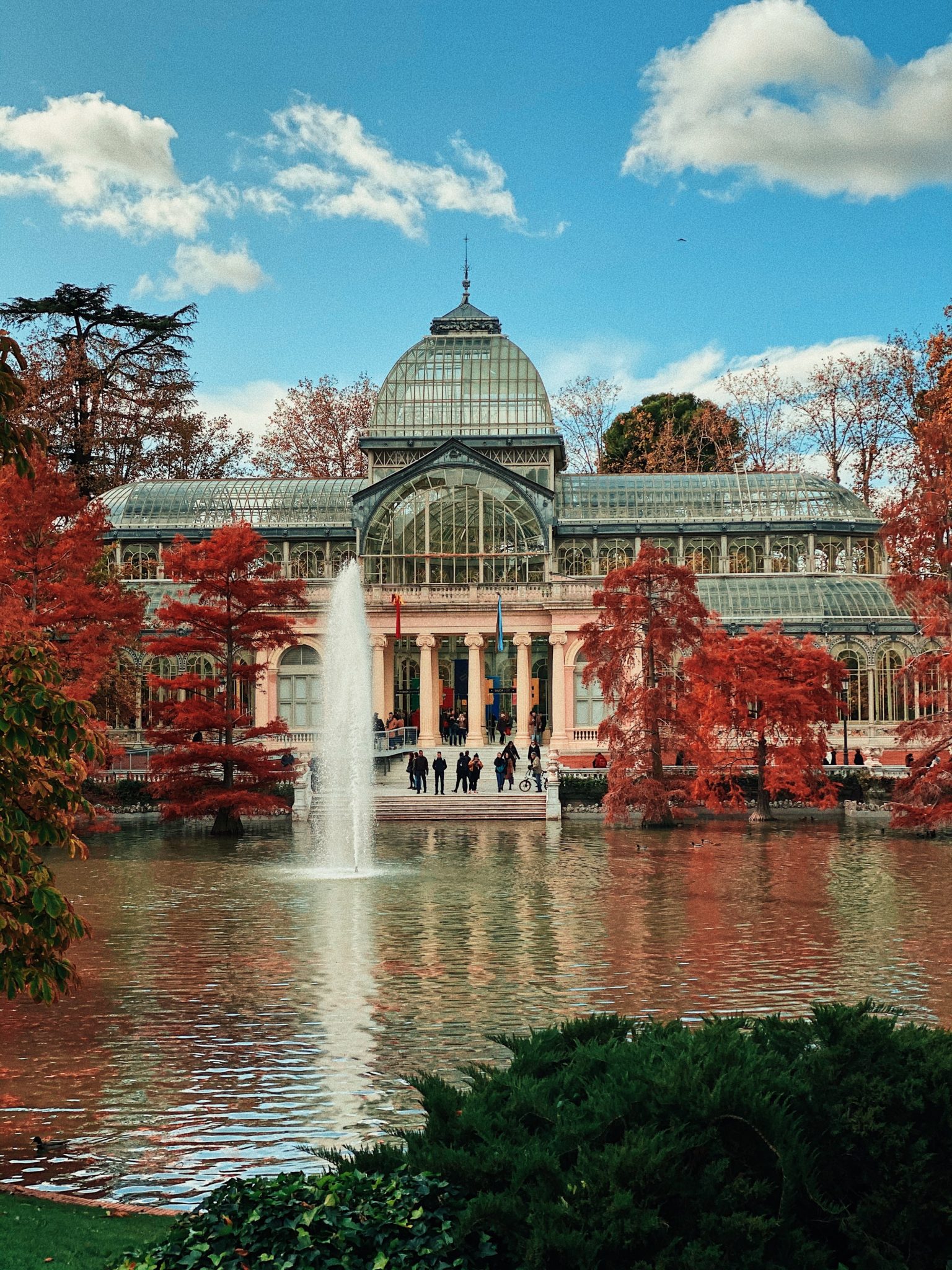
CR: ALVARO BERNAL (ABN) | UNSPLASH
5. Palacio Real – the Largest Royal Palace in Western Europe
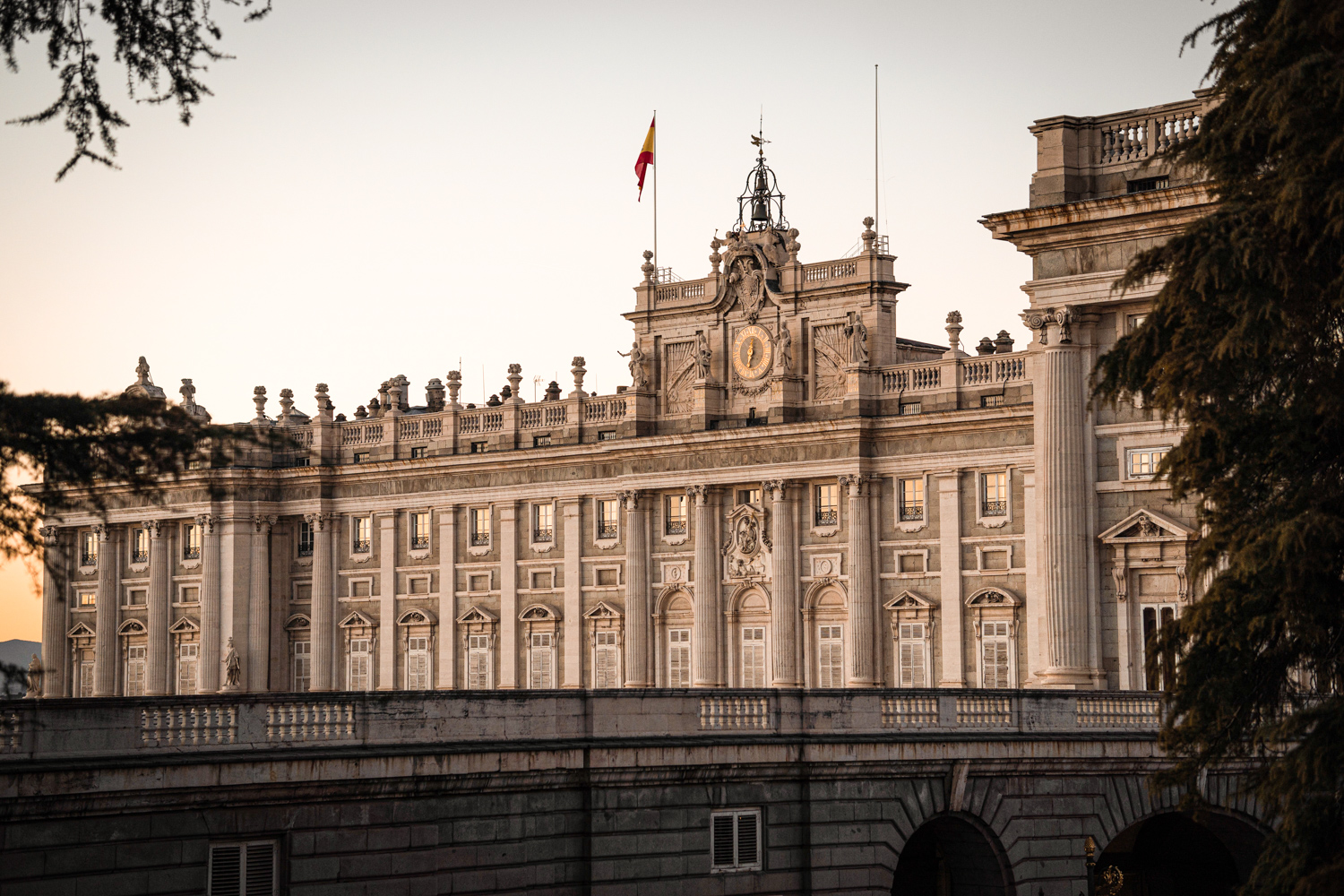
CR: HERNAN GONZALEZ (HERNAN_AGF) | UNSPLASH
The Palacio Real (Royal Palace) de Madrid is the sixth largest palace in Western Europe, the largest European palace by floor area and the ninth largest globally.
The Palace was built in 1734 on the same site as a 9th century Moorish fortress. The Moorish people were Arabian occupants of Madrid and other parts of Spain during the Middle Ages. As a result, its location became symbolic of Spain’s national identity and strength over its previous conquerors.
The palace was used by the royal family until 1931, after the exile of King Alfonso XIII. Although it is still recognised as the official residence of the Spanish royal family, they now live in the Palace of Zarzuela. Fifty of the Palacio Real’s rooms are open to the public seeking to explore Madrid, and used for state functions.




